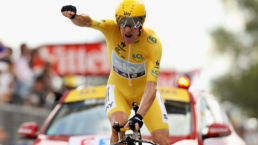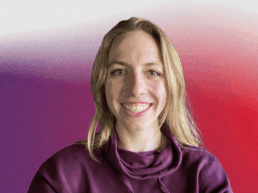Before 2004, British track cyclists had won just one gold medal at the Olympic Games.
Before 2012, no British rider had ever won the world’s greatest road race, the Tour de France.
One man’s strategic thinking and leadership reversed these trends.
In 1998, British Cycling appointed Dave Brailsford Programmes Director with the goal of becoming the world’s premier cycling team by the London 2012 Olympic Games.
The team topped the medal table at Beijing 2008, again at London 2012, and again at Rio 2016.
In 2010, Brailsford was appointed General Manager at British-based Team Sky (now Team Ineos) with the goal of winning the Tour de France with a British rider within five years.
They won it in two with Bradley Wiggins, and then a further five times in six years with two more British riders.
What drove these massive improvements in elite sport, where tiny margins are intensely fought for? What did Dave Brailsford introduce that was previously lacking at British Cycling and Team Sky?
At the heart of his success was, and still is, a deep understanding and tenacious implementation of good strategy.
And it’s something we can all use to improve our chances of winning.
What is good strategy?
Strategy is about choosing an integrated set of actions that deliver a competitive advantage.
The big dogs of strategy – Michael Porter, Richard Rumelt, A.G. Lafley (to name a few) – all communicate similar principles to aid the understanding and implementation of strategy.
These principles are what’s important. They can be applied across different industries to help teams make the right choices and move them ahead of the competition.
Good strategy isn’t goal setting. It isn’t optimising the status quo. And it isn’t short-term planning.
If strategy is about making choices, then good strategy is about making the right ones.
How do you make the right choices?
Fundamentally, good strategy contains three progressive elements. In Good Strategy / Bad Strategy, Richard Rumelt calls this the ‘kernel’. It’s a framework I like to guide strategic work. It’s one that’s also apparent in Brailsford’s approach:
- Diagnosis
- Guiding policy
- Set of coherent actions
Diagnosis
What’s the challenge?
Diagnosis is the cornerstone of good strategy. If you don’t know what the problem or opportunity is, you can’t solve or leverage it effectively.
Good information helps you make the right choices. Diagnosis is about assessing the information available and judging the nature of the challenge.
Rumelt describes diagnosis as “simply defining and explaining the nature of the challenge”. But making things appear simple is often very hard work, and this element of strategy typically requires the most attention.
Dave Brailsford says he “spent hours breaking down a challenge”. He needed to properly deconstruct the bike racing puzzle in order to identify the critical factors at play he needed to address with his guiding policy.
Guiding policy
How are we going to deal with it?
“If you broke down everything you could think of that goes into riding a bike, then improved each one by 1%, you will get a significant increase when you put them all together.”
Brailsford’s guiding policy shows the connection between the first two elements of good strategy. His guiding policy was designed to address the critical factors he had identified to give him an advantage in his field.
In Brailsford’s case, his (now famous) guiding policy was what he refers to as “the aggregation of marginal gains”: making incremental improvements over time in certain areas that will compound and widen the gap between those who consistently make the right choices and those don’t.
Brailsford isn’t the first to implement this policy.
In 1987, American Airlines removed a single olive from each of its in-flight salads, reducing costs by a remarkable £30,000 a year.
In 2011, pharmaceutical giant GlaxoSmithKline hired McLaren to improve their supply chain efficiency. The Formula 1 team decreased factory changeover times in teams by 60%. This equated to an extra 20 million tubes of toothpaste produced by GSK at the end of the year. “We used to see changeovers as down time,” a GSK engineer said. “McLaren sees pit stops as an opportunity to win the race.”
By first properly assessing the situation, you can then work out the most efficient and effective ways to improve it.
The examples I used above show that strong strategic principles are rarely context sensitive. When the elements of good strategy are properly applied, competitors can use them to improve their chances of winning in any industry. Taking an interdisciplinary approach to strategy encourages new and creative solutions to specific challenges, as seen through Brailsford’s borrowing of marginal gains theory.
Set of coherent actions
What exactly are we going to do?
“Good objectives cascade down an organisation.”
Good strategy will allow all team members to focus on achieving something. Setting smaller, achievable objectives will help avoid the paralysis we’ve all experienced from staring at a seemingly insurmountable goal (like winning Le Tour within five years!)
Each department, team and individual should ask themselves, “What’s within reach that I can achieve?” Actions and resources at all levels need to be coordinated in line with the guiding police and support each other in pursuit of the overall goal.
Team Sky’s set of actions involved speaking to surgeons about the best way to wash your hands to prevent illness, testing pillows and mattresses to provide riders with the best night’s sleep (an idea taken from the Royal Ballet), and changing the structure of team meetings to make them more efficient.
They even painted the inside of the team truck white, which helped them spot otherwise unnoticeable bits of dust that could degrade a bike’s performance.
Every action under Brailsford’s command was geared towards making constant tiny incremental improvements. He wanted to create an optimal environment where a complex, irrational human being could achieve their full potential on the bike.
These actions may now all seem obvious to take, but this is only because the hard work was done at diagnosis to understand what they could do better than the competition.

Your people are a pivot point
I think most analyses of Brailsford’s approach fail to emphasise his strong focus on people. For Brailsford, his team (not just his athletes) were critical to success. It would be what Rumelt calls a ‘pivot point’ – something that, when focused on, creates much larger effects.
Brailsford is not a coach. “My role is to be an orchestra conductor – I don’t try and do,” he says. “I try and conduct other people and I have a lot of experts who have way more expertise than I ever would in their given areas.”
Brailsford said he wanted to be able to walk into the mechanics’ workshop, be able to suggest something needed fixing and have them respond positively. This is only achieved through a commitment to nurturing a culture of autonomy, accountability and collaboration.
Without people and their hard work, strategy remains a design. “Culture eats strategy for breakfast,” Peter Drucker once said. No matter how effective your strategy may be, without support from your team and goal-alignment, projects will ultimately fall short.
Principles matter
Predictably, people are distracted by the tactics used at British Cycling and Team Sky and tend to ignore the ‘boring’ strategic work. It’s sexier to talk surgeons and wind tunnels than it is to break down challenges and design strategies.
But the latter elements are where your focus should be if you want to improve your chances of winning. It’s the lesson we should learn from Brailsford’s success. Be principle-led. Worry about the specifics later.
Brailsford successfully applied strategic principles to improve his chances of winning professional bike races. You can apply them to win in your own environment.
The core of strategy is always the same:
Diagnose, decide, act.
This is good strategy, and this is how you’ll win.
If you would like to learn how Redtorch can help you design effective strategies, get in touch. 👉 hello@redtorch.co




